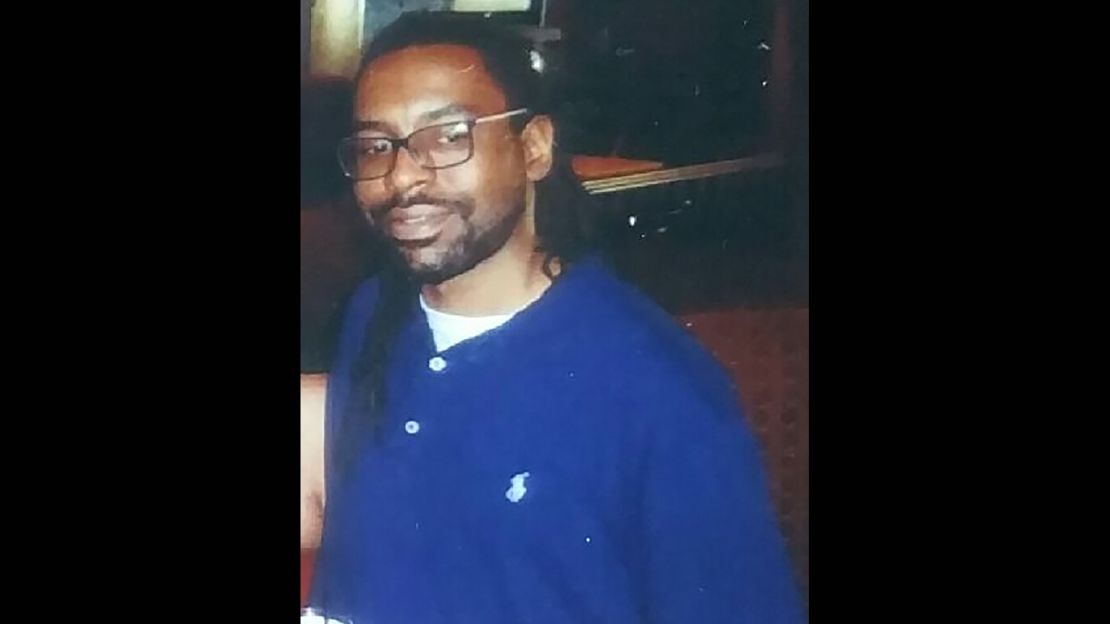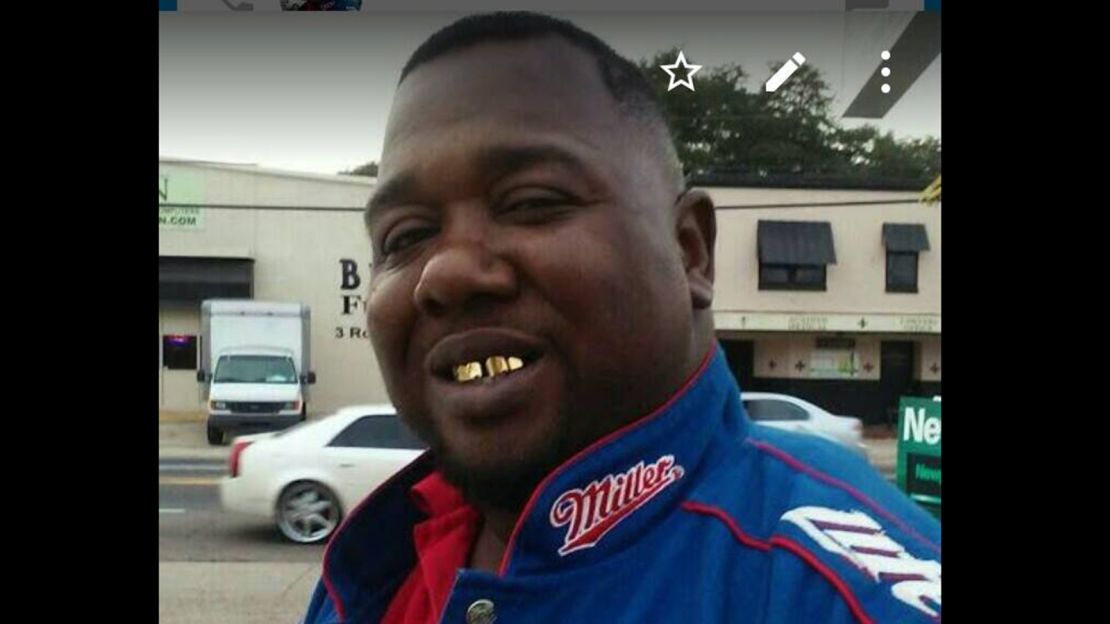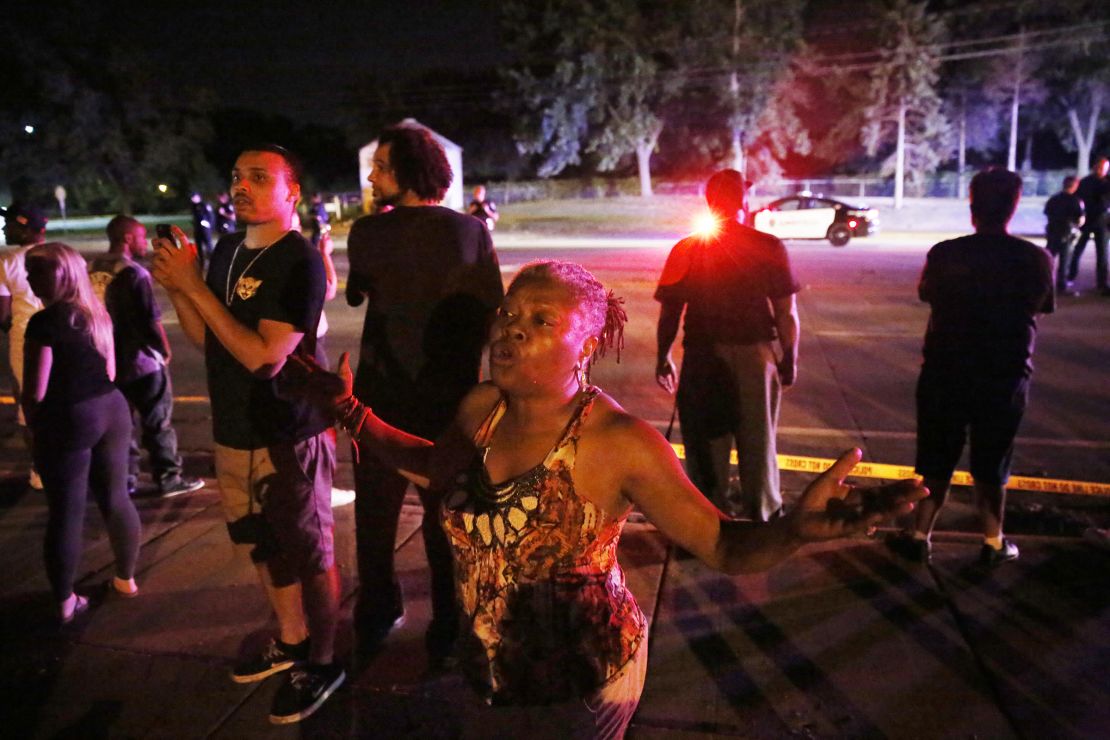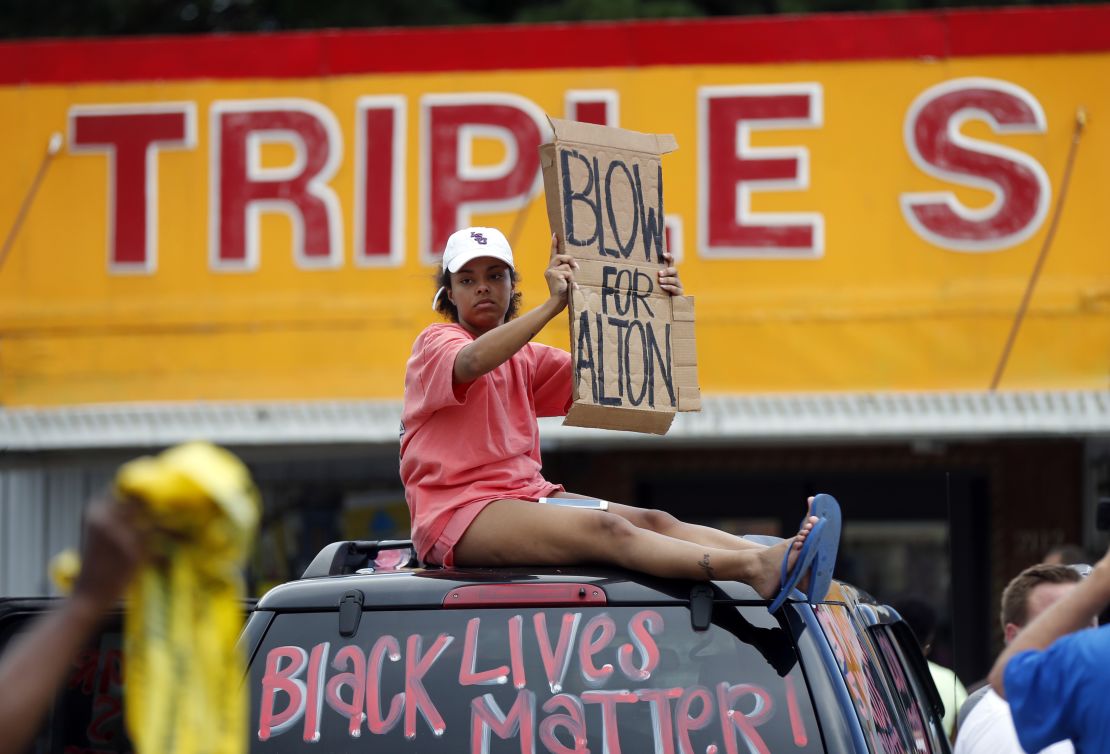Within a day of each other, two men were shot and killed by U.S. police officers.
They hailed from different parts of the country – one from Louisiana in the south, the other from Minnesota in the north.
But they shared many similarities. Both were black. Both had their last moments caught on camera. And both of their deaths were watched and shared by millions across the globe.
Their deaths have drawn people — brandishing signs emblazoned with the message #BlackLivesMatter — to the streets in their droves, demanding the world take notice of shootings that feel sadly commonplace in the U.S., yet are no less provocative.
As details continue to emerge, here’s what we know so far.
Philando Castile and Alton Sterling

Philando Castile was shot by police on Wednesday after being “pulled over for a busted tail light,” according to a woman identifying herself as his girlfriend in a live stream on Facebook.
Castile’s uncle, Clarence Castile, told CNN his nephew worked as a kitchen supervisor for the St. Paul School District.
“We all know my nephew was a good kid and we want justice as well as relief,” he said.
“My nephew has a (concealed carry) permit, and still got killed for carrying a gun … this needs to stop. This happens so often.”
READ MORE: When can police shoot?

Alton Sterling, 37, known as the “CD man” sold CDs and DVDs outside a convenience store in Baton Rouge, Louisiana – where he was killed by police on Tuesday.
“Alton was a respected man. He was beloved in the community. He did not deserve the treatment and this excessive force that was exerted on him by the police department,” Edmond Jordan, the Sterling family attorney, told CNN about the father-of-five.
Sterling has had encounters with law enforcement before, but there’s no evidence that officers at the store were aware of Sterling’s criminal history when they approached him outside the store.
A live streamed death
“Stay with me,” says Castile’s girlfriend Diamond Reynolds, as she turns the phone streaming live to Facebook to her boyfriend slumped in the driver’s seat with a blood splattered chest.
As with Sterling, it’s unclear what happened in the moments before the shooting. Reynolds claims they were “pulled over for a busted tail light.”
A police officer can be seen pointing a gun through the driver’s window, while Reynolds continues narrating the shocking scene streamed live to Facebook.
She is then ordered out of the car, pleading for her daughter who appears to be in the arms of a nearby officer.
By Thursday morning more than 2.5 million people had watched the stream.
Sterling was shot outside the Triple S Food Mart after an encounter with two police officers.
Video footage from a bystander captured officers wrestling Sterling to the ground and kneeling on him. The camera pans away and gunshots are heard – when it pans back, Sterling is seen sprawled on his back with a large blood stain on his chest.
One of the crucial next steps will be to determine what happened before the confrontation ensued.
Authorities said that the officers were responding to a 911 report of a man with a gun. A source close to the investigation told CNN the witness who called 911 said Sterling was “brandishing a gun.”
However Abdullah Muflahi, the owner of the store, told CNN he wasn’t aware of any incident Tuesday that would have spurred a 911 call.
Muflahi is sure the shooting was caught on his store’s surveillance cameras, though he hasn’t seen it. Police took the video later Tuesday, he told CNN.
Protests in Louisiana and Minnesota

In Minnesota, crowds gathered outside Governor Mark Dayton’s home in St. Paul in the early hours of Thursday morning protesting against the police killing of Castile.
They held banners emblazoned with slogans such as “Stop Police Brutality,” and chanted “No justice, No sleep.”

Earlier in the week, Sterling’s death prompted protests Baton Rouge and other parts of the country, including Ferguson, Missouri, Philadelphia.
“I, for one, will not rest,” Quinyetta McMillon, the mother of one of Sterling’s children, said Wednesday, “and will not allow y’all to sweep him in the dirt.”
As she spoke, McMillon and Sterling’s 15-year-old son stood by her side, sobbing.
READ MORE: Calls for justice, peace echo at Alton Sterling memorials
The bigger picture
The killings of Castile and Sterling are just the latest of several incidents that have shocked the United States, igniting yet another debate about the use of deadly force in the line of duty.
The U.S. government does not keep national statistics on the number of people killed by police. However, at least two newspapers, the Washington Post and the Guardian, maintain databases based on news reports, public records, social media, and their own reporting. They use slightly different criteria, but both found more than 500 cases of people being killed by police from Jan. 1 to July 5, 2016.
The FBI found that 41 law enforcement officers were killed in the line of duty in 2015, down from 51 in 2014. The killers used firearms in 38 of the 41 killings, the FBI reported.
READ MORE: More police shooting, or more coverage?
The fatal 2012 shooting of 17-year-old African-American Trayvon Martin by white Hispanic George Zimmerman, a neighborhood watch volunteer, brought arguments about the comparative treatment of African-Americans to the fore – with everyone from President Obama on down joining the debate.
While Martin was not shot by police, the handling of his killer by authorities and later the judicial system, was key to launching the #BlackLivesMatter movement.
Elsewhere, a perceived racial profiling of African-Americans by police officers continued to bubble just below the surface.
The situation reached a tipping point with the death of Michael Brown – an 18-year-old unarmed black man who was shot and killed by a white police officer – in Ferguson, Missouri in 2014. The outrage that followed saw residents take to the streets. Soon these protests had spread coast to coast, and as far as across the Atlantic to London.
READ MORE: Why is the U.S. home to nearly a third of mass shootings?
A year later, anger erupted again after Freddie Gray, a 25-year-old African-American man, died while in police custody in Baltimore. While at first, peaceful protests were organized – they soon turned violent with reports of stores being looted, rocks being thrown at police and vehicles being set on fire.
These cases have forever changed the conversation on law enforcement procedures as well as police brutality and equality both at home and abroad.
Sheena McKenzie, Lauren Said-Moorhouse, Richard Greene, Josh Berlinger, Sheena Jones, Emanuella Grinberg, Catherine E. Shoichet and Steve Almasy contributed to this report.






